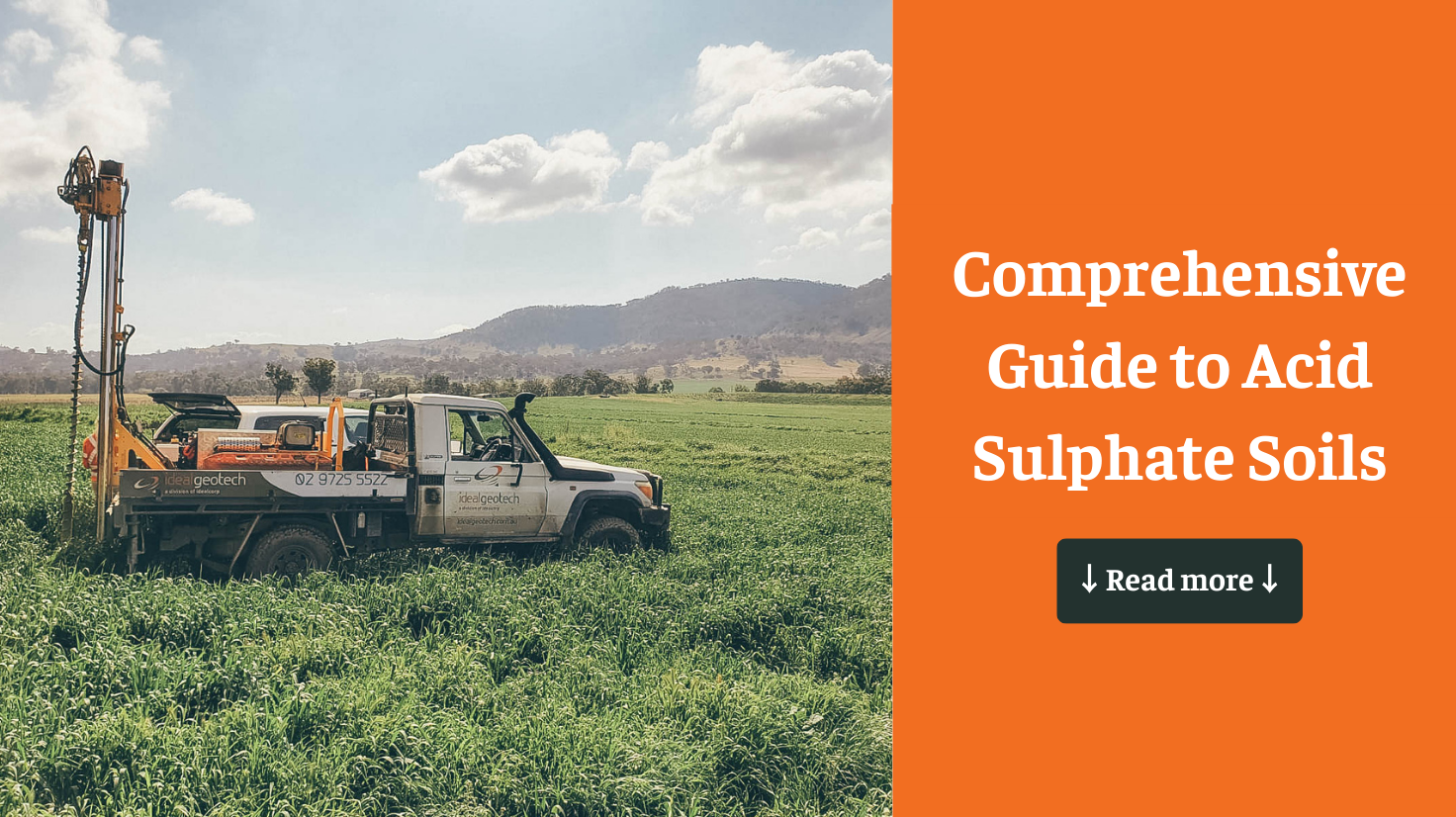Acid sulphate soils (ASS) are a significant topic in environmental management due to their potential impact on construction, agriculture, and natural ecosystems. This comprehensive guide aims to provide a thorough understanding of what ASS are, their characteristics, and their environmental implications.
By exploring these aspects, we can better appreciate the importance of proper acid sulphate soil assessment in various environmental and industrial contexts.
1. Definition and Formation
1.1 What Are Acid Sulphate Soils?
Acid sulphate soils (ASS) are naturally occurring soils rich in iron sulphides, primarily pyrite (FeS₂). These soils are typically found in low-lying coastal regions, estuarine environments, and some freshwater wetlands. When these soils are disturbed or exposed to air, the iron sulphides oxidize, leading to the formation of sulfuric acid, which can severely acidify the soil.
1.2 Formation of Acid Sulphate Soil
The formation of acid sulphate soils is linked to specific environmental conditions, particularly in waterlogged, anaerobic environments. Under these conditions, bacteria facilitate the reduction of sulphates to form iron sulphides, including pyrite. When these soils are drained or excavated, oxygen exposure initiates chemical reactions that produce sulfuric acid. This acidification process significantly lowers the soil pH, often to levels that can harm plant and animal life.
1.3 Chemical Properties
are characterized by high levels of sulphates and extremely low pH (often below 4) when oxidized. The acidification process often results in the formation of jarosite, a yellow iron sulphate mineral. The production of sulfuric acid during oxidation can mobilize toxic metals, such as aluminum and iron, which can further degrade the soil and water quality, making these soils highly corrosive to infrastructure and harmful to ecosystems.
2. Characteristics
2.1 Appearance
In their undisturbed state, acid sulphate soils often appear dark, waterlogged, and may have a greasy texture. When exposed to oxygen, they can change color, turning yellow, orange, or reddish due to the formation of iron oxides and jarosite.
2.2 Typical Environments
These soils are commonly found in environments such as:
- Coastal and estuarine areas, where tidal influences are significant.
- Mangrove swamps, where the waterlogged conditions promote pyrite formation.
- Floodplains, where periodic flooding can lead to the accumulation of sulphates.
- Tidal flats, where anaerobic conditions are common.
- Inland freshwater wetlands, where low oxygen levels in waterlogged soils facilitate pyrite accumulation.
2.3 Indicators
Several key indicators can help identify acid sulphate soils:
- Soil pH levels below 4 when exposed to air, indicating high acidity.
- Presence of jarosite and other iron sulphates, which are secondary minerals formed during oxidation.
- Hydrogen sulphide odor in undisturbed conditions, a characteristic “rotten egg” smell.
- Vegetation dieback in areas where ASS have been disturbed, due to toxic conditions created by the soil.
3. Environmental Impact
3.1 Impact on Construction
In construction, ASS present significant challenges. When disturbed, these soils can produce acidic runoff, which can corrode concrete, steel, and other construction materials. The acidic conditions also pose a risk to nearby ecosystems, potentially leading to the acidification of surrounding water bodies, harming aquatic life and vegetation. Construction projects in areas with acid sulphate soils require careful management to mitigate these risks, including strategies like soil neutralization and controlled excavation.
3.2 Impact on Natural Ecosystems
The environmental impact of acid sulphate soils is profound, particularly on natural ecosystems:
- Loss of Biodiversity: The acidic conditions resulting from the oxidation of these soils are detrimental to many plant and animal species, leading to a decline in biodiversity.
- Fish Kills: Acidic runoff can lower the pH of waterways, resulting in fish kills and affecting aquatic life.
- Habitat Destruction: Vegetation dieback caused by acidification results in the loss of habitat for various species, further impacting biodiversity and ecosystem stability.
3.3 Management and Mitigation
Effective management of acid sulphate soils involves several strategies:
- Detailed Soil Assessment: Before any land disturbance, it’s crucial to conduct a thorough assessment to determine the extent of ASS and the potential risks.
- Minimizing Soil Exposure: Implementing strategies to keep ASS waterlogged can prevent oxidation. Techniques include maintaining high water tables or creating physical barriers to oxygen exposure.
- Neutralizing Acidity: The application of lime or other neutralizing agents can counteract acidity, making the soil less harmful. This is often necessary in both construction and agricultural contexts.
- Careful Project Design: Avoiding disturbance of acid sulphate soils during construction projects, or designing projects in a way that minimizes soil exposure, is crucial to reducing environmental impact.
4. Conclusion
Understanding acid sulphate soils is crucial for environmental management, particularly in coastal and wetland areas. Through comprehensive assessment and proper management strategies, the negative impacts of these soils can be mitigated, ensuring the protection of infrastructure and natural ecosystems.
For more information on acid sulphate soil assessment, visit Ideal Geotech’s website. Ensure your construction project is built on solid ground with professional acid sulphate soil management and assessment services.







